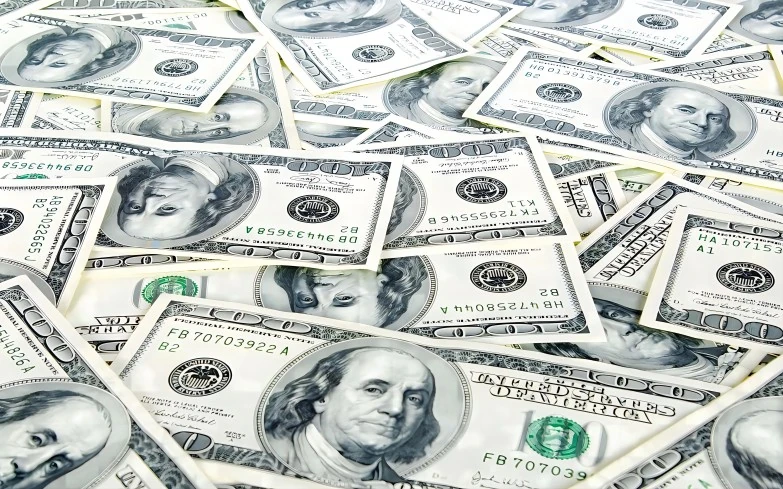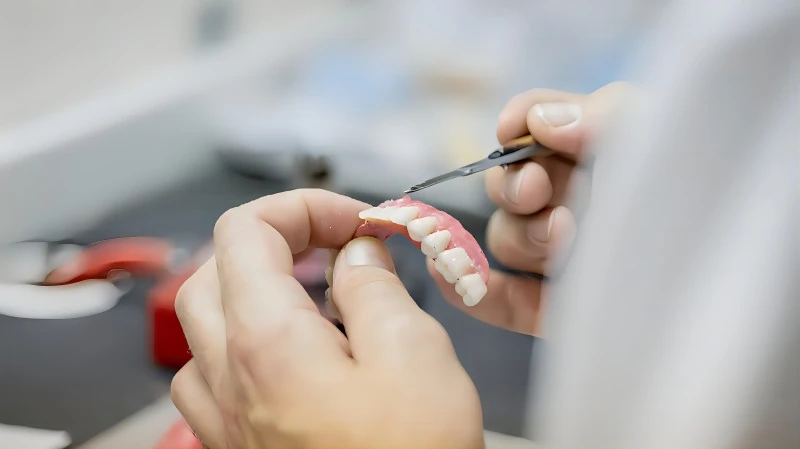
Dental health problems are becoming increasingly severe. The more developed the economy is, the more popular sugary foods become, and the more common tooth decay is. However, the development of medical technology cannot keep up with the speed of tooth destruction. Dental diseases may also lead to various diseases such as diabetes and heart disease.
On the one hand, there are serious dental health issues, and on the other hand, a huge industry has emerged from this -- denture making (also known as prosthetic dentistry). The Greater Bay Area, including Shenzhen, has become the world's largest denture production base.

In the investment industry, there is a saying, "Golden eyes, silver teeth, and copper bones," which refers to the scale and profits of the industry. According to the oral industry report in October 2019, from 2011 to 2018, the number of dental implants in China increased from 130,000 to approximately 2.4 million, with a compound annual growth rate of 51.7%. In mainland China alone, there are a total of 21.55 million missing teeth. Estimating the price of each implant to be 10,000 yuan, the potential market space is approximately 215.5 billion yuan. This does not include the oral equipment and supplies, oral specialty medical services, and other industries in the industry chain. According to research reports, in a mature country, the proportion of oral medical consumption to total health expenses is 4.13%. Proportionally, the size of China's oral medical market can reach 217.2 billion yuan.

According to data provided by Dentsply Sirona, a US dental equipment manufacturer, China became the world's major production base for dentures as early as 2012, with an annual output of 86.5 million dentures, accounting for 60% of the global total. According to an industry insider, it should now account for about 80% of the global total.
China's denture processing enterprises are mainly concentrated in the Greater Bay Area centered on Shenzhen, including Dongguan, Zhuhai, and other places. The Yangtze River Delta region centered on Shanghai is also an important production area. The denture industry in Guangdong began in the 1990s when entrepreneurs and technicians from Hong Kong came to Shenzhen and Zhuhai to establish the first batch of denture factories. They brought technology and trained the first batch of skilled workers in the Pearl River Delta, which then branched out and gave birth to many local companies.
There is a saying in the industry that if Shenzhen stops, the world will have toothaches. Currently, there are more than 100 denture processing enterprises in Shenzhen alone, distributed in districts such as Nanshan and Bao'an. Large denture factories with over 1,000 employees in China are mainly concentrated in Shenzhen, including Modern Dental and Jiahong. Among them, Modern Dental, which has been listed on the Hong Kong Stock Exchange, is one of the world's largest denture processing factories with over 2,000 employees and a product line including traditional ceramic crowns and implant restorations.
The products produced by denture companies in Shenzhen are divided into domestic sales and exports. Many companies divide their domestic and export products into different factories. Export products mainly follow the foreign trade route and are mainly sold overseas. The main customer groups are foreign denture factories that entrust them with OEM production, as well as hospitals. They are mainly exported to the United States and Europe, with the United States being the largest customer. The United States is the world's largest consumer of medical devices. During the global pandemic, some denture foreign trade factories reduced production by 90%. Some insiders say that this data may be a common situation, but how much impact it will have depends on the international development of the epidemic in the future.

Due to the rise of China dental lab industry, the number of denture factories in the United States and other places has declined rapidly. According to Bloomberg News, the number of denture manufacturing companies in the United States has decreased by nearly 50%, from 12,250 in 2008 to only 7,200 in 2016. The main reason is the improvement of the quality of Chinese dentures and their low price. In terms of labor costs, the annual income of American skilled workers engaged in making dentures ranges from 40,000 to 100,000 US dollars (equivalent to 280,000 to 700,000 RMB), while that of Chinese skilled workers is around 70,000 to 120,000 RMB, with a difference of at least four to five times. Statistics show that more than 40% of dentures and other materials in the United States come from overseas, with China being the main supplier.
Behind a single denture lies a production chain involving more than 15 links, with even more subdivisions. Dentures can be classified into fixed and removable types. The production process of a fixed denture includes more than 10 steps, such as data collection, modeling, design, 3D printing, casting, porcelain coating, porcelain grinding, glazing, and polishing. Although technology is constantly developing and the process is being optimized and adjusted, some manual grinding and intervention steps cannot be omitted, which somehow limits the emergence of giants in the entire industry. However, technologies such as 3D scanning, remote data transmission, and 3D printing have been widely used in the denture industry.
The dental and denture industries have two special characteristics. First, doctors cannot complete the work alone, and they must cooperate with denture factories. Since every patient's teeth are unique in shape, size, and color, they must be handmade and cannot be produced on a conveyor belt. Second, due to the first reason, although the automation level of denture production is improving, a large amount of manual work is still required. Therefore, it is difficult to cultivate denture factory masters in a large-scale and standardized way. Most of them still adopt the apprentice system, with masters teaching their apprentices hands-on, which directly limits the scale of expansion. As a result, the denture industry in the Greater Bay Area and even China has formed a situation where a few leading companies coexist with a large number of small and medium-sized processing factories.